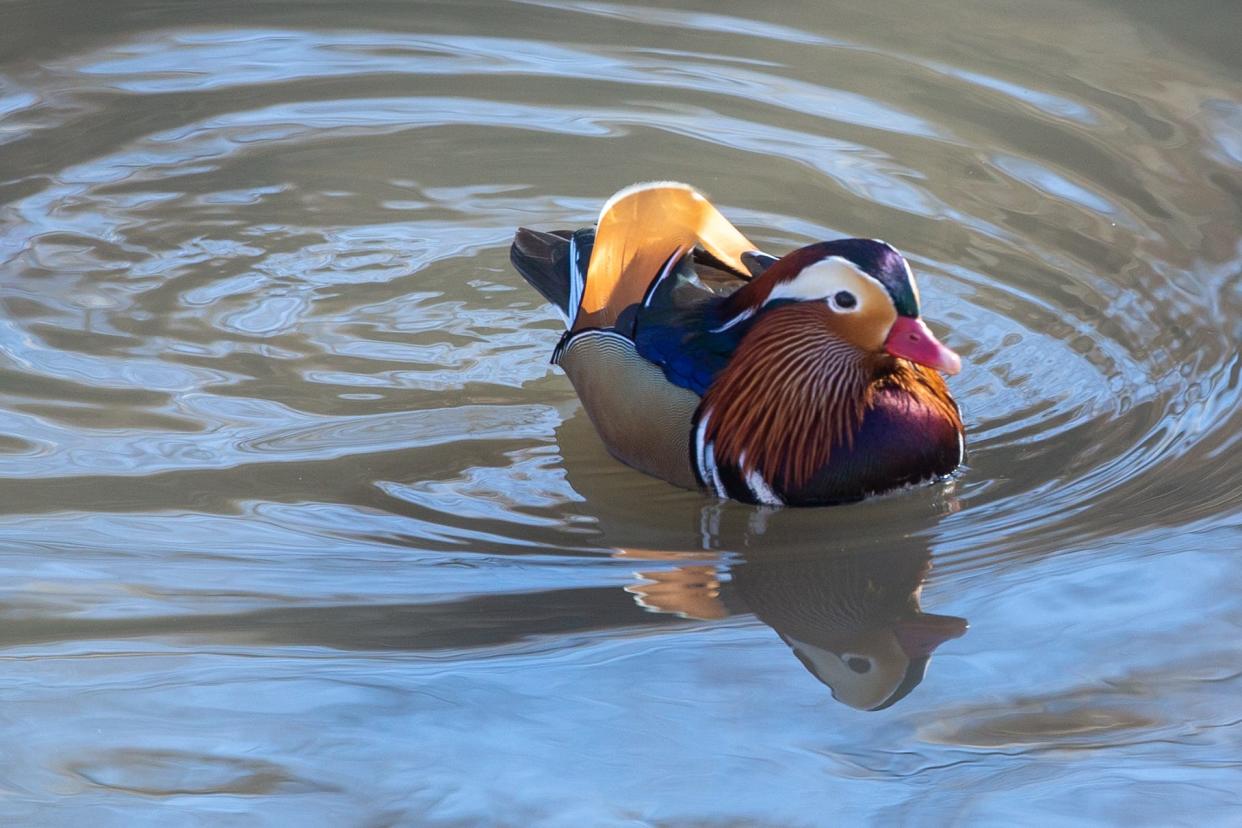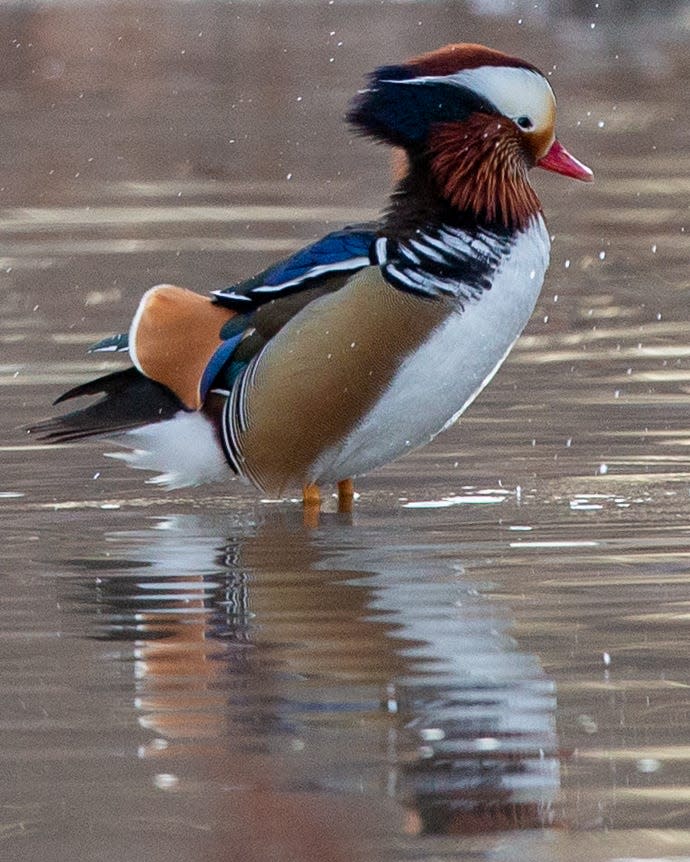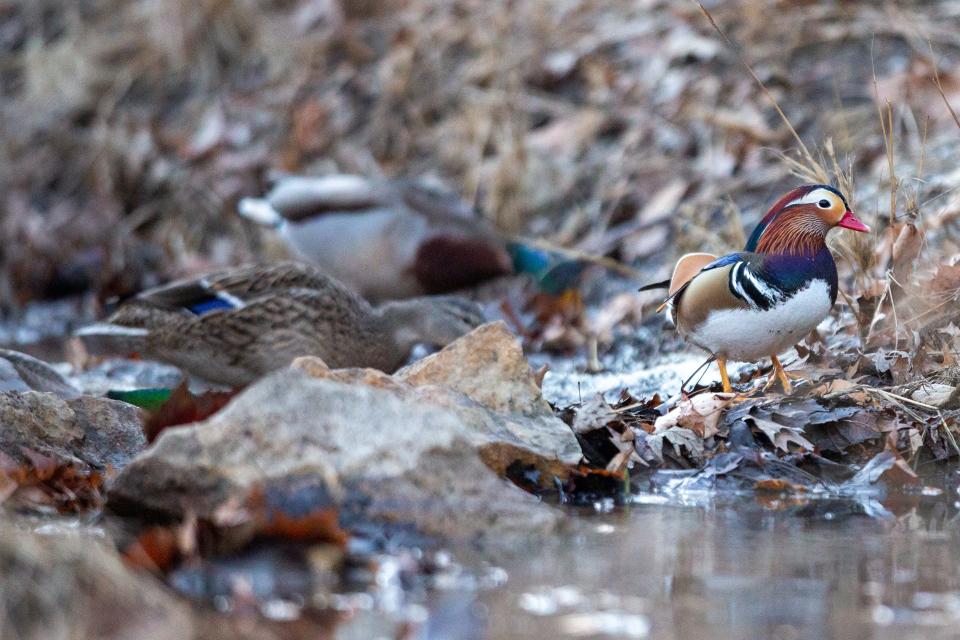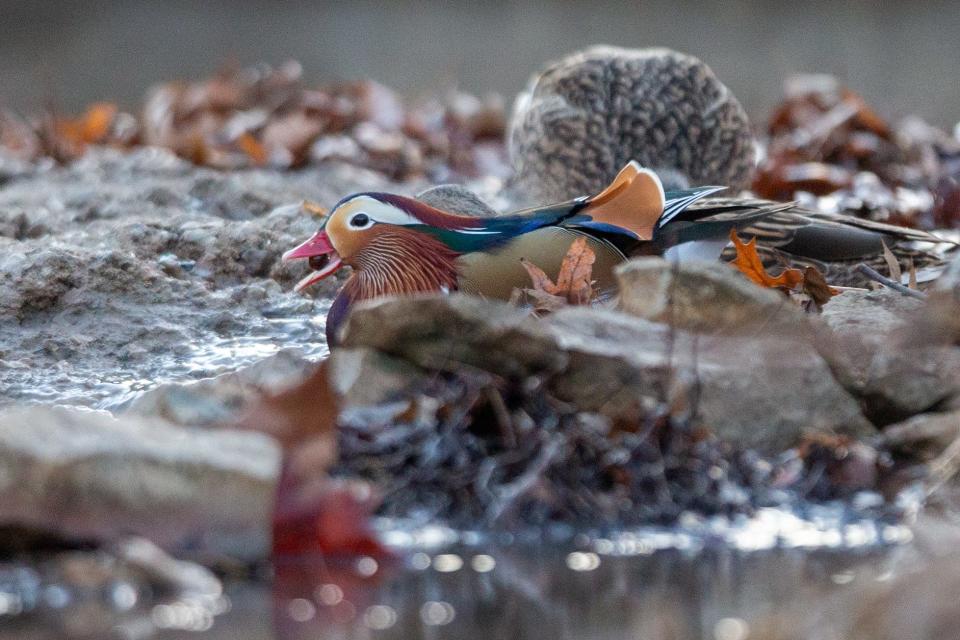Mandarin duck with 'just insane' colors is hanging out in Topeka. Kansas officials will let it be.

Topekan Byron Porter shot photos late last month of the multicolored mandarin duck that's been spending time in Topeka's Washburn Park at 2810 S.W. 10th Ave.
"The colors that he's got are just insane," he told The Capital-Journal. "It makes for a pretty picture."
Porter first saw images of the mandarin on the Facebook page of the 11,400-member Kansas Wildlife Photography Group.
The waterfowl's colorful plumage has contrasted with that of the mallard ducks with which it has hung out since last month in Ward Creek at Washburn Park.

Though mandarins are native to Asia and not Kansas, the state has no plans to capture or relocate the duck in Washburn Park, said Great Bend-based Tom Bidrowski, migratory game bird program manager for the Kansas Department of Wildlife and Parks.
"Waterfowl are well-suited to survive many climates, including the recent Kansas cold spell," he told The Capital-Journal.
Mandarin duck likely escaped private collection

Aviarists often keep mandarin ducks in their collections, so the one at Washburn Park is more likely an escapee from a private collection than a migrant, Bidrowski said.
Mandarins are relatively rare but aren't considered endangered.
In North America, they are primarily found in California, according to the website of Ducks Unlimited.
The species are "cavity nesters" and at times use nest boxes that were put out for wood ducks, that site said.
Mandarin duck is one of more than 25 species that visit Kansas

Bidrowski encouraged bird enthusiasts to enjoy the mandarin at Washburn Park while it's still here, as well as the millions of other ducks and geese that spend time in Kansas each year.
About 27 species of duck and five species of geese are regularly sighted in this state, Bidrowski said.
Online citizen science programs such as ebird.org and the Kansas Ornithological Society help track the sightings of such waterfowl, he said.
This article originally appeared on Topeka Capital-Journal: Kansas won't move mandarin duck that's spending time in Washburn Park

